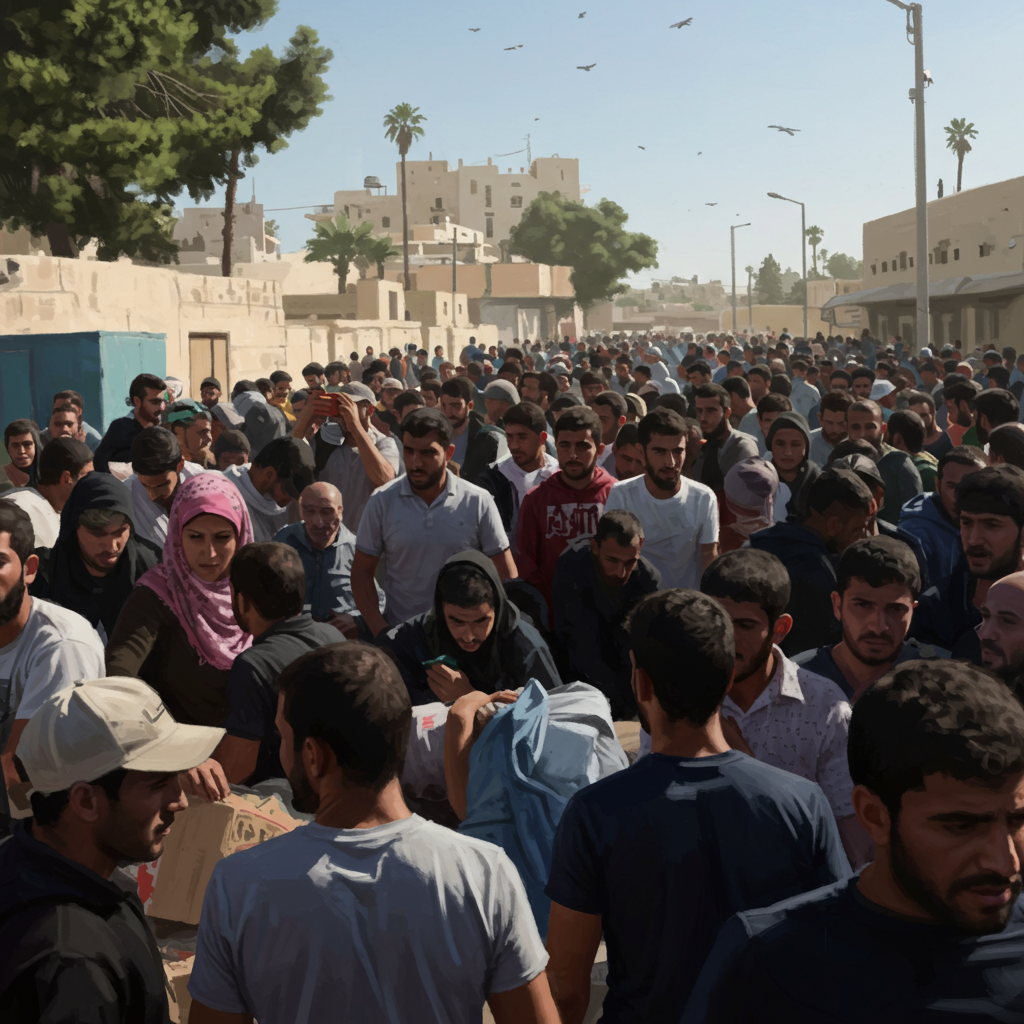The humanitarian situation in Gaza has reached a critical point, with the United Nations issuing stark warnings about a rapidly escalating water crisis. Aid agencies report that access to clean drinking water is severely limited, raising fears of a “man-made drought” with devastating consequences, particularly for vulnerable populations like children.
Only a fraction of Gaza’s water production facilities remain operational, estimated at around 40 percent. This dire situation is exacerbated by chronic fuel shortages necessary to power pumps and desalination plants, coupled with extensive damage to vital water and sanitation infrastructure across the Strip. Experts and human rights groups highlight that the deliberate obstruction of essential supplies, including water, electricity, and fuel, alongside the destruction of infrastructure, is crippling the population’s ability to access basic necessities for survival. This intentional deprivation contributes significantly to widespread disease and death.
The lack of clean water and functional sanitation systems is directly linked to a surge in water-borne illnesses. Health officials have documented thousands of cases of diseases like diarrhea, jaundice (Hepatitis A), and skin infections, with a alarming rate of increase, particularly among young children. The spread of these diseases, combined with malnutrition and inadequate medical care due to a devastated healthcare system, is leading to preventable deaths. Reports from medical professionals describe infants dying from dehydration and malnutrition, and note that severe deprivation hinders recovery from injuries and other illnesses.
The humanitarian catastrophe unfolding in Gaza is underscored by mounting casualties. Recent reports from the Gaza health ministry indicate a significant loss of life, with hundreds of Palestinians killed and over a thousand wounded within recent days. This adds to a staggering cumulative death toll since the conflict intensified. Tragically, many of those killed have been civilians seeking safety or essential aid. Incidents near aid distribution sites have proven particularly deadly, contributing to a high number of casualties among those desperately awaiting assistance. The conflict has also claimed the lives of a significant number of aid workers, including many affiliated with UN agencies, highlighting the immense risks faced by those attempting to deliver relief.
Humanitarian operations are severely hampered by access constraints and insecurity. The volume of essential aid entering Gaza has plummeted, drastically falling below the daily requirements estimated by aid organizations needed to address the scale of the crisis. Aid officials describe the situation as a “completely fabricated” starvation crisis where hunger is being “weaponised,” emphasizing that the trickle of aid reaching the population is wholly insufficient. Movement restrictions, damaged roads, checkpoint delays, and ongoing hostilities make delivering aid within Gaza extremely dangerous and complex.
As the crisis deepens, international pressure on parties to the conflict has grown. Several nations and blocs have expressed increasing alarm over the humanitarian situation and access restrictions, with some taking steps such as reviewing trade relations or suspending negotiations. However, the effectiveness of these measures in significantly improving the flow of aid and ensuring the protection of civilians remains a critical global concern. The stark warnings from the UN about thirst and the ongoing heavy death toll underscore the urgent need for unimpeded humanitarian access and an immediate de-escalation of hostilities to avert further catastrophe.



